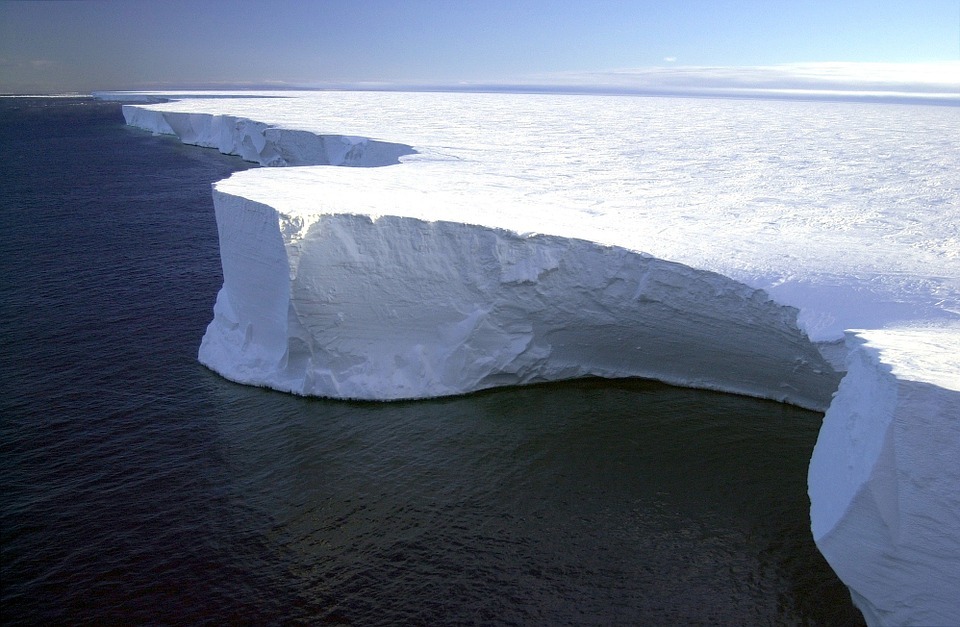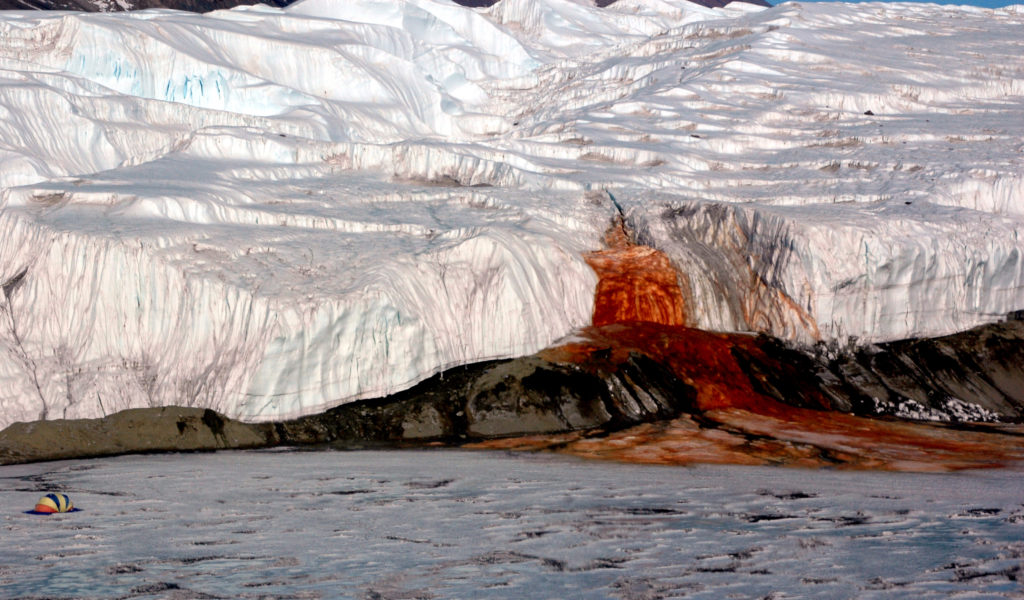You’ve probably seen a dozen waterfalls in your lifetime, but have you seen one that pours blood? Well, it is not technically blood, but the Blood Falls found in the Taylor Glacier in Antarctica is made up of red-colored water that had remained peculiar for researches for a number of years before they discovered what causes it. Here is the story of the strange and unusual Blood Falls of Antarctica.
Who Discovered the Blood Falls?
The Blood Falls was first discovered in 1911 by Thomas Griffith Taylor, an anthropologist and geographer who was a member of Captain Robert Scott’s Terra Nova Expedition in Antarctica from 1910 to 1913. Taylor, along with Robert Scott’s team, noticed red water coming out of a small waterfall at a glacier to the south of the Asgard Range, which was discovered during in the 1901 to 1904 British Nation Antarctic Expedition. The glacier was thought a portion of the previously found Ferrar Glacier, but Robert Scott and his team argued that it separate from Ferrar. Scott then named the glacier after Thomas Griffith Taylor, hence the reason why it is known today as the Taylor Glacier.
Thomas Griffith Taylor became a part of the expedition when Robert Scott was looking for experience geologists who can help them navigate through the rough terrain and weather. Taylor agreed to be on the expedition, although he would also have to serve as the weather service representative. However, during his missions on Antarctica, he is often positioned in a different team from Robert Scott’s main team, which aimed to be the first to reach the South Pole.
Unfortunately, the Terra Nova Expedition team was unsuccessful in their mission, as Roald Amundsen and his team of Norwegian expedition specialists were the first to reach the South Pole approximately 34 days after Scott’s team arrived there. Robert Scott, along with the other members of the main group, died when they tried to return to their stations. Griffith Taylor, who was clueless as to what happened to Scott’s team, was rescued by a supply ship on February 18, 1912, after failing to pick them up on the scheduled date of January 15. It was presumed that Robert Scott died on March 29, 1912, due to exhaustion, starvation, and hypothermia. Taylor continued to honor his fellow expedition team members in his later years before his death on November 5, 1963, at the age of 82.
The Red Color of Blood Falls
Thanks to the efforts of the Terra Nova Expedition team, researchers were able to know more about Antarctica, and it also allowed them to study the strange Blood Falls thoroughly. According to the records of the Terra Nova, the red color of the water coming out of the glacier may have been caused by millions of red algae that have lived within the confines of the glacier for roughly two million years. These microbes are speculated to have evolved differently from the ones found outside the glacier and Antarctica because of their unique environment.
Despite having almost no oxygen and heat, the microbes were able to survive the harsh conditions in the glacier by getting alternative sources of energy, and one of these sources is the iron found in the water inside the glacier, which has a high salinity level. The metabolic process of these microbes, wherein they would utilize sulfate to metabolize the organic matter found within the glacier and transform it into energy, is not found in any living beings on Earth besides them.
For many years, it was thought the algae were the ones that create the red color of the Blood Fall’s water because of their source of energy, but after further research, it was discovered that the iron oxides were the ones who make the water turn red. Iron naturally makes liquid have a reddish color, and this makes sense if you look at our blood, as it is rich in iron and it needs the element to produce more red blood cells. In addition, iron oxides are the chemical compounds that produce rust in metal. So, you can say that the water found in the Blood Falls is rusty.
Survival of Life in Harsh Conditions
Because of the discovery that microbes can live in environments that have little to no oxygen, many scientists believe that life can survive in other planets or heavenly bodies in the universe. They have supported this argument by presenting Mars’ environment and comparing it to the one found in the Taylor Glacier. Both of these environments are said to be similar when it comes to temperature and oxygen levels, but there is still no evidence that there is life on Mars until now. Another heavenly body that they are trying to take a closer look at is Europe, a moon in Jupiter that is covered in thick layers of ice and may have the same environment found on Mars.
We may not be able to see in our lifetime if there are any amazing microbes or living beings surviving on the said places outside Earth, but for now, we can just admire the beauty, peculiarity, and wonder of the Blood Falls.

